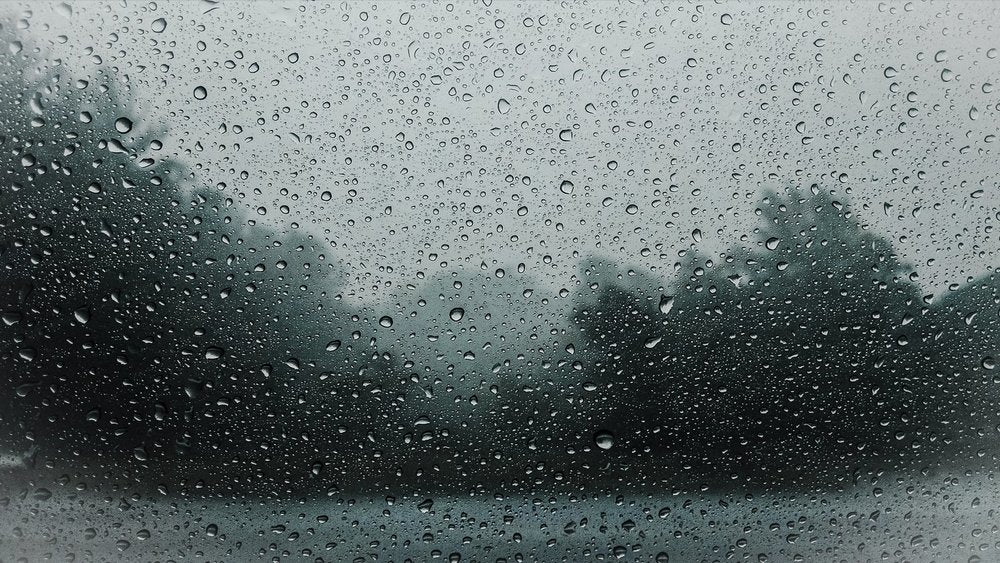Your Cart is Empty
Extra 10% Off Sale Items - Discount applied in basket
Extra 10% Off Sale Items - Discount applied in basket
Extra 10% Off Sale Items - Discount applied in basket
Extra 10% Off Sale Items - Discount applied in basket
August 30, 2019 4 min read

Scotland is nearing its wettest August on record and whilst rainy days aren’t necessarily ideal weather conditions for our Scottish summers, we do embrace it and take the opportunity to put the Meander Jacket to the test. Recent downpours have reminded us just how important it is to have a good waterproof so we thought we’d do a recap on different waterproof materials and technologies and what to look for in a jacket that will meet any wet-weather need, from city to coastline to mountaintop.
To be categorised as waterproof, a material must provide a higher level of sustained water resistance and it must have a minimum rating of 1500 mm. In technical gear this is usually achieved by combining layers of fabric with special waterproof membranes or coatings. When a product is labelled waterproof, it must be either made of a waterproof material (e.g. rubber) or include a waterproof breathable membrane. To be fully waterproof a jacket must also have taped seams (as our Meander jacket has) because no matter how good your fabric is, when seams are sewn together you will be creating many tiny holes that will let a small amount of water sneak through.
Ratings are great for gauging where about on the scale your jacket sits but it is important to consider the end purpose. For example, if you’re going for a gentle stroll around town then a rubber Scandi style fisherman jacket will do the job but if you break into any sweat then there’s nowhere for the vapour to escape and it will more than likely start raining on the inside of the jacket! If you’re doing your daily commute, cross country ski-ing or hiking a Munro then you’ll want to consider something more breathable. When looking at ratings it is important to get the balance right between waterproof level and breathability as many fabrics such as rubber will have a very high rating but at the same time a very low breathability rating.
Our Meander jacket has a water resistance rating of 10,000mm (UNI EN 20811) and breathability rating of 13.600g/m2 (JIS L 1099 A1) or 50,000g/m2 (JIS L 1099 B1) but what do those numbers actually mean?
The water resistance rating refers to the amount of rainfall a fabric can withstand in 24 hours and is measured using a Hydrostatic pressure test. Our jacket can withstand 10,000mm of rainfall in a single day without letting any moisture in. The higher the number, the more waterproof an item is.

The breathability rating can get slightly more confusing as there are 2 different common testing methods and the numbers quoted by different manufacturers could be from one or the other. The two tests are know as the Upright Cup Test - JIS L 1099 A1 and the Inverted Cup Test JIS L 1099 B1/B2. You can read more about the tests here. Both use a chemical mix to simulate sweat and measure how many grams of vapour can be pulled through the fabric over 24 hours. As with the waterproof rating, the higher the number, the more breathable the item is.
Upright Cup Test

Inverted Cup Test

DWR, which stands for Durable Water Repellency, is a treatment applied to the outer layer of the jacket. The treatment involves adding an invisible coating of hydrophobic molecules that repel water and stop it from getting into the fabric. When the DWR is effective, water will roll off the outside of the jacket. However, DWR treatments are not 100% effective in heavy rain, are not permanent and will wear over time. Products that only have a DWR coating can not be classified as waterproof and in anything more than a light shower it will penetrate through and you will get wet.
Membrane Explained
A good technical fully waterproof jacket is made with 2 or 3 layers and the 2nd layer is a membrane fabric which is specifically designed to keep the water out while being breathable enough to let any sweat escape. These fabrics work by having a thin waterproof membrane bonded to the outer-layer of the fabric. The membrane itself contains billions of tiny mircopores that are large enough the water vapour and sweat can escape, but small enough that larger liquid water molecules cannot get through. In a 2 layer fabric, the membrane is bonded to one layer of fabric on the outside which protects the membrane from damage and providing any thermal properties. 2 layer fabrics are often combined with a lining fabric to protect the inner side of the membrane, while in a 3 layer fabric there is a thin protective fabric bonded directly to the membrane allowing for a lighter and a thinner product. There are also “2.5 layer” fabrics where a thin veneer protects the inside of the membrane, but this often compromises the level of breathability.
The DWR protects the outer-layer from becoming waterlogged and heavy as the rain water just rolls off and the membrane ensures that the fabric is completely waterproof and will keep you completely dry. For a versatile waterproof jacket that will take you from coastline to mountaintop then we would always recommend going for a fully waterproof membrane plus DWR.

The DWR treatment wears off over time and re treatment is recommended as it will both reduce the water absorption to the jacket and improve the breathability. We suggest that our customers reproof their jackets after 20–30 washes in order to regain water repellency. It’s important to note that even if the DWR treatment wears off, the membrane will ensure your jacket will remain waterproof unless the fabric is ripped, it just may become water logged on the outside and become heavier when wet.There are various re-treatment options to choose from but our preferred choice is Nikwax TX Direct wash-in. When washing your Meander Jacket, please follow the care instructions provided. We recommend a non-bio detergent, no fabric softener and hand-washing on 30 degrees.
Many customers like the versatility and techniness of the Meander Jacket. It’s lightweight, packable and waterproof, making it ideal for transitional weather. It transforms to street when paired with trainers and a good pair of jeans. We’ve tested the Meander jacket in Scotland in all weather conditions and we’re confident that it will withstand heavy downpours.
Ready to get yours? Shop here.
Comments will be approved before showing up.
